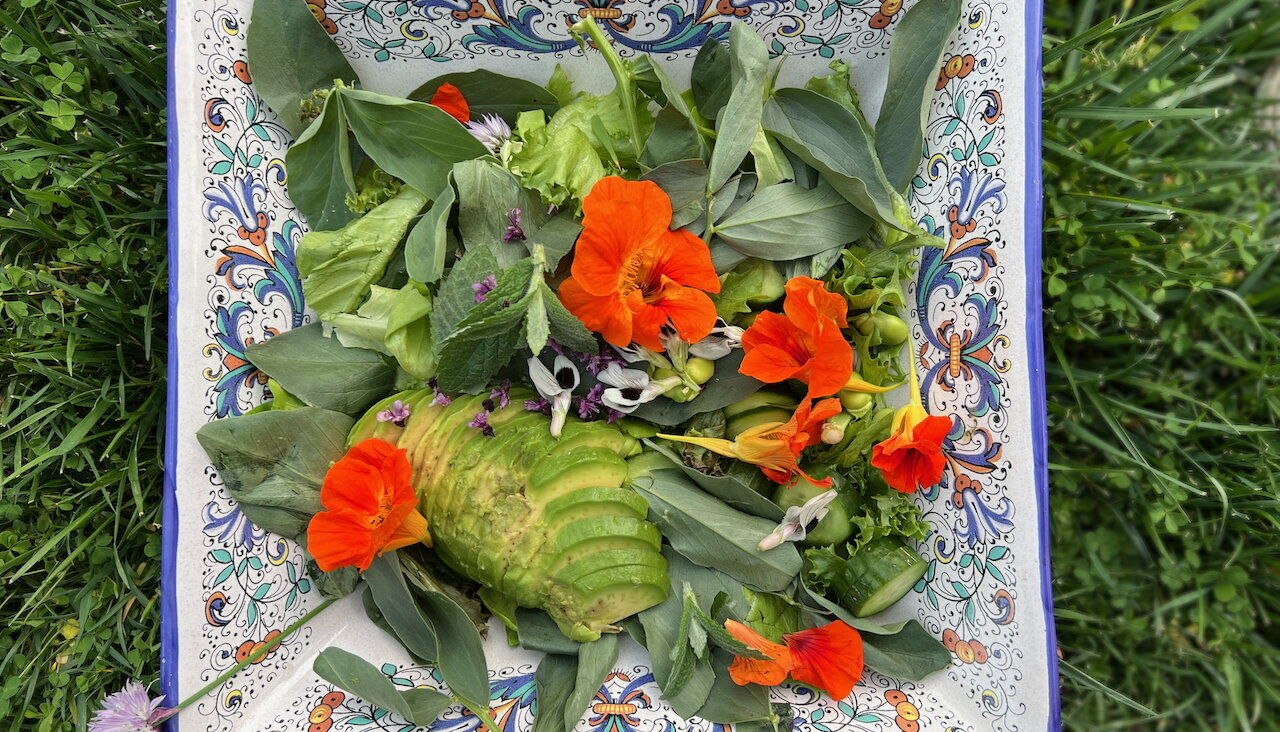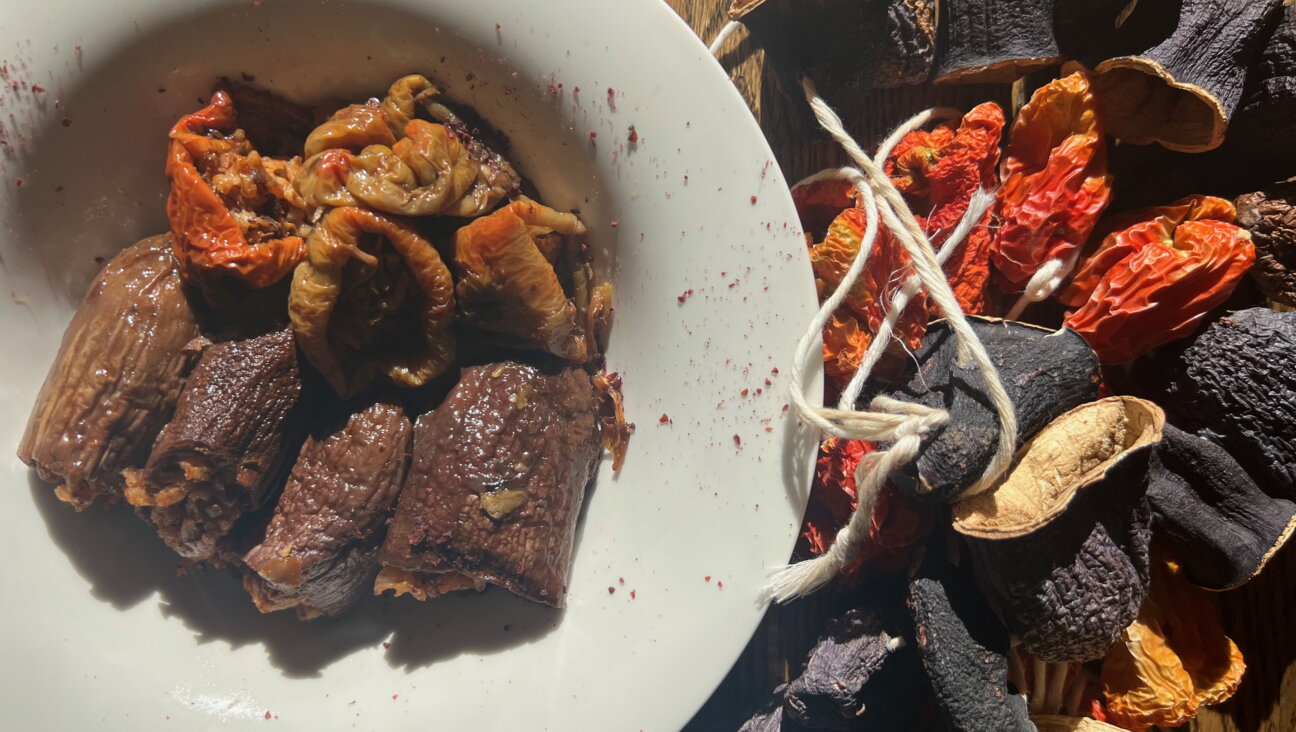Creamy Panna Cotta for Shavuot

Image by iStock
Shavuot is just around the corner, meaning, it’s time to break out the dairy. With recipes for cheesecake and cream cheese rugelach on every corner, I like to add an Italian twist to my holiday table with panna cotta, a silken mold that translates to cooked cream (check back for more Italian recipes this afternoon). While I normally try to limit my dairy consumption, Shavuot screams out for us to challenge our lactose intolerance and enjoy decadent and delicious dairy desserts like this one.
There are many arguments for eating dairy on Shavuot, though, the one that resonates most with me is the abundance of milk and cheese in the spring. It’s a true celebration of eating seasonally, as cows and sheep are producing extra milk at this time of the year. Switching over to eating fresh dairy products is also a nice change from cleaning the greens coming from our CSA and local farmers’ markets.
When it comes to desserts, I have a soft spot for foods with the consistency of jello. I long for jiggley puddings and comforting custards. However, since the 9-year old me found out what went into old-fashioned gelatin and that it was not actually vegetarian, I swore off it. (Yes, yes, I know there’s kosher gelatin, but that is frequently made from fish bones, so for a strict vegetarian, it’s off-limits).
This realization meant giving up that delicious, creamy, custardy dessert — panna cotta — that’s held together with gelatin. While I could replace the gelatin with egg yolks to make an amazing custard (and a delicious base for ice cream), it’s still not going to have the silk-like consistency of panna cotta. So again, I was out of luck.
Enter: agar agar, or simply agar, depending upon who you ask. The Japanese seaweed which is sold in strips, blocks, flakes and powder form acts as a vegetarian gelatin, and if it’s cooked properly, leaves no trace of seaweed flavor. Science buffs may know it as the material used to culture microorganisms in the lab.
I learned to use it at The Natural Gourmet Institute for Health and Culinary Arts. It works perfectly in a divine panna cotta recipe, allowing me to revive my favorite childhood Shavuot dish. It can easily be infused with more sophisticated flavors such as lavender petals, citrus zest or espresso.
I hope that others will embrace this dairy treat for Shavuot and make something that will really impress your company.
Panna Cotta
Adapted from The Natural Gourmet Institute for Health & Culinary Arts
Makes 6 servings
Panna Cotta is one of those desserts that really easy to make, and super impressive to serve. It’s a good one to have in your back pocket! In honor of Shavuot, this recipe uses dairy, but with some easy experimentation, you could make a vegan rendition using coconut milk.
Agar is most common at health food stores in flake form, sold by the Eden brand, and in Asian markets as a powder. When using it, make sure to boil it in the water for at least 15 minutes, until it dissolves completely or your final product won’t set properly.
1 cup heavy cream
1/2 cup maple syrup
pinch sea salt
1 tablespoon agar agar flakes, soaked for 10-15 minutes in 3/4 cup cold water
1 3/4 cup buttermilk
1 teaspoon vanilla extract or 1 scraped vanilla bean
1) If using a vanilla bean, scrape the seeds from the bean into the cream and add the bean pod. Cover, and let infuse for 30 minutes. Remove the bean then continue.
2) In a small saucepan, combine the cream or coconut milk, maple syrup, and salt. Simmer on low for about 5-7 minutes and set aside.
3) In a separate small saucepan, bring the soaked agar/water mixture to a boil. Lower heat, stirring frequently, and simmer uncovered until the agar is completely dissolved. Use the back of a spoon to determine if you see any small flakes. If you do, keep simmering. This should take about 15-20 minutes. Combine with cream mixture and simmer for another 3-5 minutes.
4) Remove from heat and add buttermilk and the vanilla extract (if you are not using a vanilla bean) to the cream/agar mixture.
5) Lightly oil six 4oz ramekins with a neutral oil, such as canola. You can also forego the ramekins and use a wine or martini glass, or an espresso cup, but if you are going to serve it in that glass, no need to oil.
6) Ladle Panna Cotta mixture into the ramekins and cover loosely with plastic wrap. Refrigerate for at least 2 hours, and preferably longer. These will keep well for a few days in the refrigerator.
7) When you are ready to serve, run a sharp knife around the edge of each ramekin and flip onto a plate. A few taps of the bottom of the ramekin should work to unmold the finished panna cotta, which should be eaten cold. Garnish as desired — fresh fruit and chocolate sauce would be especially delicious.
Elisheva Margulies is the founder of Eat With Eli, a natural foods culinary service based in St. Louis.
The Forward is free to read, but it isn’t free to produce

I hope you appreciated this article. Before you go, I’d like to ask you to please support the Forward.
Now more than ever, American Jews need independent news they can trust, with reporting driven by truth, not ideology. We serve you, not any ideological agenda.
At a time when other newsrooms are closing or cutting back, the Forward has removed its paywall and invested additional resources to report on the ground from Israel and around the U.S. on the impact of the war, rising antisemitism and polarized discourse.
This is a great time to support independent Jewish journalism you rely on. Make a gift today!
— Rachel Fishman Feddersen, Publisher and CEO
Support our mission to tell the Jewish story fully and fairly.
Most Popular
- 1

Fast Forward Ye debuts ‘Heil Hitler’ music video that includes a sample of a Hitler speech
- 2

Opinion It looks like Israel totally underestimated Trump
- 3

Culture Is Pope Leo Jewish? Ask his distant cousins — like me
- 4

Fast Forward Student suspended for ‘F— the Jews’ video defends himself on antisemitic podcast
In Case You Missed It
-

News In Edan Alexander’s hometown in New Jersey, months of fear and anguish give way to joy and relief
-

Fast Forward What’s next for suspended student who posted ‘F— the Jews’ video? An alt-right media tour
-

Opinion Despite Netanyahu, Edan Alexander is finally free
-

Opinion A judge just released another pro-Palestinian activist. Here’s why that’s good for the Jews
-
Shop the Forward Store
100% of profits support our journalism
Republish This Story
Please read before republishing
We’re happy to make this story available to republish for free, unless it originated with JTA, Haaretz or another publication (as indicated on the article) and as long as you follow our guidelines.
You must comply with the following:
- Credit the Forward
- Retain our pixel
- Preserve our canonical link in Google search
- Add a noindex tag in Google search
See our full guidelines for more information, and this guide for detail about canonical URLs.
To republish, copy the HTML by clicking on the yellow button to the right; it includes our tracking pixel, all paragraph styles and hyperlinks, the author byline and credit to the Forward. It does not include images; to avoid copyright violations, you must add them manually, following our guidelines. Please email us at [email protected], subject line “republish,” with any questions or to let us know what stories you’re picking up.















